Introductory unit:
-Practise the importance of phonemes.
-Incredible English Kit Digital Resources for 4th graders.
Unit 1: PLAYING OUTDOORS.
-Enjoy the following sports maze.
-Learn about the characteristics of some popular sports
-Practise the following memory game on sports.
-Do the following activity using the short answer for Can.
-Listen to the pupils in the class and choose the correct answer.
-Where do my meals come from?
-Make a healthy lunchbox.
Unit 2: ART.
-Revise some professions.
-What do these people do?
-More activities on jobs.
-What do you want to be?
-Remember the use of the present simple.
-Practise the present simple order.
-Practise the negative form of the present simple.
-Practise habits and routines.
-Fill in the gaps in the sentences related to frequency adverbs.
-Practise the frequency adverbs.
-Design your comic strip.
Unit 3: HEALTH.
-Remember the three uses of should:
1) We use should for giving advice.
.You should speak to him about it.
.He should see a doctor.
.He should ask a lawyer.
2)We use should to give an opinion or a
recommendation.
.He should resign now.
.He should invest more in Asia.
.They should do something about this terrible train service.
3) Should expresses a personal opinion and is much
weaker and more personal than must or have to.
It is often introduced by I think.
recommendation.
.He should resign now.
.He should invest more in Asia.
.They should do something about this terrible train service.
3) Should expresses a personal opinion and is much
weaker and more personal than must or have to.
It is often introduced by I think.
.I think they should replace him.
.I don´t think they should keep the contract.
.Do you think we should tell her?
. PRONOUNS.


A Pronoun is used to replace a noun.
sentence.
Let us take as examples the following sentences:
I scored three goals in the soccer match. The coach praised
me.
me.
-Often a pronoun takes the place of a particular noun. This name
is known as the antecedent.
is known as the antecedent.
A pronoun ´refers´ to, or directs your thoughts toward its
antecedent.
antecedent.
Let us take as examples the following:
Let´s call Sheila and ask her to join the team. (Her is a
pronoun; Sheila is its antecedent).
pronoun; Sheila is its antecedent).
-Assessment on pronouns.
Unit 4: FARM.
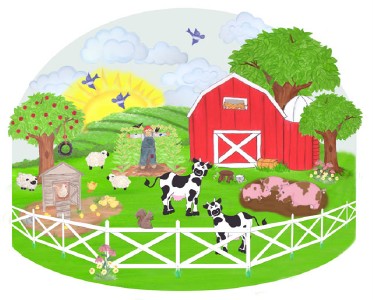
.PRESENT CONTINUOUS.
It expresses the idea that something is happening now, at this
very moment.
Let us take as examples the following:
I am learning English now.
You are not swimming now.
I am not standing.
They are not watching TV now.
What are you doing?
.Click on the following link to read more information on the
present continuous:
-Complete list of present continuous forms and its uses.
.Write the negative and the question form of the present
continuous for the following sentences:
-Violetta is singing her new song ´Supercreative´.
Unit 4: FARM.

.PRESENT CONTINUOUS.
It expresses the idea that something is happening now, at this
very moment.
Let us take as examples the following:
I am learning English now.
You are not swimming now.
I am not standing.
They are not watching TV now.
What are you doing?
.Click on the following link to read more information on the
present continuous:
-Complete list of present continuous forms and its uses.
.Write the negative and the question form of the present
continuous for the following sentences:
-Violetta is singing her new song ´Supercreative´.
-The students are writing some messages on the blackboard.
-Helen is studying for an English test.
-Laura´s dog is eating some bread now.
-Darren is watching TV in the sitting-room at the moment.
.Do the following activities on the present continuous:
-Practise the present continuous.
-Form the present continuous for the following sentences.
-Match the sentences with the pictures.
-Form sentences with the present continuous.
-Choose the correct auxiliary verb.
-What are they doing?
-Form sentences with the present continuous tense.
.You should keep in mind the correct use of the present simple
and the present continuous.
Read the following notes about these on the following link:
-Present simple versus present continuous.
.Activities to practise the use of the present tense:
-Put the verb in brackets in the right tense: present simple or present continuous.
-Helen is studying for an English test.
-Laura´s dog is eating some bread now.
-Darren is watching TV in the sitting-room at the moment.
.Do the following activities on the present continuous:
-Practise the present continuous.
-Form the present continuous for the following sentences.
-Match the sentences with the pictures.
-Form sentences with the present continuous.
-Choose the correct auxiliary verb.
-What are they doing?
-Form sentences with the present continuous tense.
.You should keep in mind the correct use of the present simple
and the present continuous.
Read the following notes about these on the following link:
-Present simple versus present continuous.
.Activities to practise the use of the present tense:
-Put the verb in brackets in the right tense: present simple or present continuous.
-Are these sentences used in the simple or continuous present?
-Play ´Mix and Match´.
-Complete the sentences.
*Reading corner: STORY PACKS.
-Try to read the following traditional tales.
.PLURAL RULES FOR NOUNS.
-Most words add -s to make the plural in nouns in
English.
Let us take as examples the following:
desk - desks month- moths
book- books train - trains
friend- friends shop - shops
-Words ending in -o, -ch, -sh, -s, -ss, -x or -z make
the plural by adding -es, for instance:
potato - potatoes wish- wishes
bus - buses box- boxes
church- churches dish - dishes
cross - crosses waltz - waltzes
tomato- tomatoes
-Words ending in -y preceded by a consonant both change
the -y to an -i and add -es, for example:
city- cities family- families
lady- ladies strawberry- strawberries
pony- ponies blackberry- blackberries
.Let´ s pratise the plural of nouns with these activities:
-Activity I.
-Activity II.
-Activity III.
-Play ´Bug catcher´ .
-Practise irregular plurals.
-See and spell plurals.
-Play ´Speed Word´.
-Play ´Trapped´.
.SOME AND ANY.
.A/an is used with singular nouns, for instance:
There´s a cat on the sofa.
There is an ant over there
.Some is used with uncountable nouns and plural
nouns in positive sentences.
Let us take as examples the following:
There is some water in my mug. (Uncountable noun.)
There is some sugar in my coffee. (Uncountable noun.)
There are some people in the street. (Plural noun.)
There are some books on the shelf. (Plural noun.)
.Any is used with uncountable nouns and plural nouns
in negative and question sentences, for instance:
There isn´t any milk in my cup. (Uncountable noun.)
There isn´t any butter on my piece of toast. (Uncountable noun.)
Is there any noise in the class? (Uncountable noun.)
Is there any dust in your room? (Uncountable noun.)
There aren´t any people in the street. (Plural noun.)
There aren´t any dictionaries in the class. (Plural noun.)
Are there any children playing in the park? (Plural noun.)
Are there any toys in the room? (Plural noun.)
-Practise countable and uncountable nouns.
-Multiple choice quiz.
-Some, any, a or an.
-Complete the following sentences with some, any, a or an.
- Choose some or any.
-Multiple choice quiz: some or any.
-Click some or any.
-Choose some, any, a or an.

.Complete the following sentences using some or any:
.Remember the use of the impersonal to be:

.Complete the following sentences using is or are:
.Unit 5: ANIMAL LIFE.

-Play ´Mix and Match´.
-Complete the sentences.
*Reading corner: STORY PACKS.
-Try to read the following traditional tales.
.PLURAL RULES FOR NOUNS.
-Most words add -s to make the plural in nouns in
English.
Let us take as examples the following:
desk - desks month- moths
book- books train - trains
friend- friends shop - shops
-Words ending in -o, -ch, -sh, -s, -ss, -x or -z make
the plural by adding -es, for instance:
potato - potatoes wish- wishes
bus - buses box- boxes
church- churches dish - dishes
cross - crosses waltz - waltzes
tomato- tomatoes
-Words ending in -y preceded by a consonant both change
the -y to an -i and add -es, for example:
city- cities family- families
lady- ladies strawberry- strawberries
pony- ponies blackberry- blackberries
.Let´ s pratise the plural of nouns with these activities:
-Activity I.
-Activity II.
-Activity III.
-Play ´Bug catcher´ .
-Practise irregular plurals.
-See and spell plurals.
-Play ´Speed Word´.
-Play ´Trapped´.
.SOME AND ANY.
.A/an is used with singular nouns, for instance:
There´s a cat on the sofa.
There is an ant over there
.Some is used with uncountable nouns and plural
nouns in positive sentences.
Let us take as examples the following:
There is some water in my mug. (Uncountable noun.)
There is some sugar in my coffee. (Uncountable noun.)
There are some people in the street. (Plural noun.)
There are some books on the shelf. (Plural noun.)
.Any is used with uncountable nouns and plural nouns
in negative and question sentences, for instance:
There isn´t any milk in my cup. (Uncountable noun.)
There isn´t any butter on my piece of toast. (Uncountable noun.)
Is there any noise in the class? (Uncountable noun.)
Is there any dust in your room? (Uncountable noun.)
There aren´t any people in the street. (Plural noun.)
There aren´t any dictionaries in the class. (Plural noun.)
Are there any children playing in the park? (Plural noun.)
Are there any toys in the room? (Plural noun.)
-Practise countable and uncountable nouns.
-Multiple choice quiz.
-Some, any, a or an.
-Complete the following sentences with some, any, a or an.
- Choose some or any.
-Multiple choice quiz: some or any.
-Click some or any.
-Choose some, any, a or an.

.Complete the following sentences using some or any:
- I have
__________ money at home.
- Have you got
___________ brothers
or sisters?
- I don´t want
__________ sweets now.
- There are ___________ books
here.
- There is ___________
water in the
bottle.
- There are __________
bottles of water
in the fridge.
- There is not
__________ noise here.
- There are not
_________ restaurants in this town.
- Would you like
___________ sugar?
- Are there __________
big hotels in this
town?
.Remember the use of the impersonal to be:

.Complete the following sentences using is or are:
- There _______ a book on
the table.
- ________ there
any books on the
shelf?
- There ________ a lamp
in the room.
- ________ there
a man in
the garden?
- There ________ some
glasses here.
- ________ there
two tables in the room?
- ´Susan, __________
there a chair
in the garden?´
- ´Is there a little girl
outside our house?´
- ´________ there many
museums in London?´
- ´Mum, _______ there any
water in the fridge?´
.Unit 5: ANIMAL LIFE.
.Revision of the concept of adjective.
.Read the following link on the adjective:
.The comparison of adjectives.
1) Monosyllabic adjectives
are compared with -er, -est.
| positive | comparative | superlative | ||
| strong | stronger | strongest | ||
| small | smaller | smallest | ||
| late | later | latest | ||
| nice | nicer | nicest | ||
| big | bigger | biggest | ||
| thin | thinner | thinnest | ||
| fat | fatter | fattest |
.Example: London is bigger than Vienna.
2) Disyllabic adjectives ending
with y, er, ow, le
are compared with -er, -est.
| positive | comparative | superlative |
| easy | easier | easiest |
| happy | happier | happiest |
| clever | cleverer | cleverest |
| narrow | narrower | narrowest |
.Example: Which is the easiest exercise?
more, most.
| positive | comparative | superlative | |
| careful | more careful | most careful | |
| expensive | more expensive | most expensive | |
| difficult | more difficult | most difficult | |
| tired | more tired | most tired | |
| terrible | more terrible | most terrible | |
.Examples: Which
dress is more expensive?
Which dress is the most expensive?
*Special adjectives
can be compared with -er, -est or
more, most.
|
||||||||||||||||||||||||||||||||
| 4) Irregular forms: | ||||||||||||||||||||||||||||||||
Irregular forms
|
||||||||||||||||||||||||||||||||
* not) as ...
as.
| Ann is as tall as Mary. |
| I think tomorrow it will be as hot as today. |
| This test was not as difficult as the last one. |
.Try this new activity on comparison of adjectives.
-Comparison with adjectives.
.Write the correct form of adverbs for these sentences:
1. She works __________ than all the others. (hard)
2. Couldn´t you drive a bit __________? (careful)
-Comparison with adjectives.
.Write the correct form of adverbs for these sentences:
1. She works __________ than all the others. (hard)
2. Couldn´t you drive a bit __________? (careful)
3. I can´t understand. Would you ask him to speak ________? (clear)
4. John was shouting __________ than everybody else. (loud)
5. I think I understand __________ than the others. (good)
6. She gets up __________ than everybody else in the house. (early)
7. Do you think older people drive __________ than young people? (slow)
8. This computer is __________ than that one. (expensive)
.Write an essay about the benefits of honey. It must have four paragraphs.
Follow these steps:
Paragraph 1: Introduction of the topic. What is honey?
Honey is..... It tastes sweet/sour.
Paragraph 2: Which Ancient societies used honey as a natural antibiotic?
Egiptian, Greek or Roman society? Could it be all of them?
Why?
Paragraph 3: Honey is made by...(name of the animal).
_______ is a vertebrate/invertebrate animal.
Honey is easiest to harvest in Summer/Spring/Winter/Autumn.
Paragraph 4: Benefits of honey. Write as many benefits as you know.
Honey has vitamins and minerals.
Besides, honey has anti bacterial properties/anti inflammatory properties.
A VISIT TO " MUSEO DE LA MIEL EN COLMENAR".
. These pieces of information might help you:
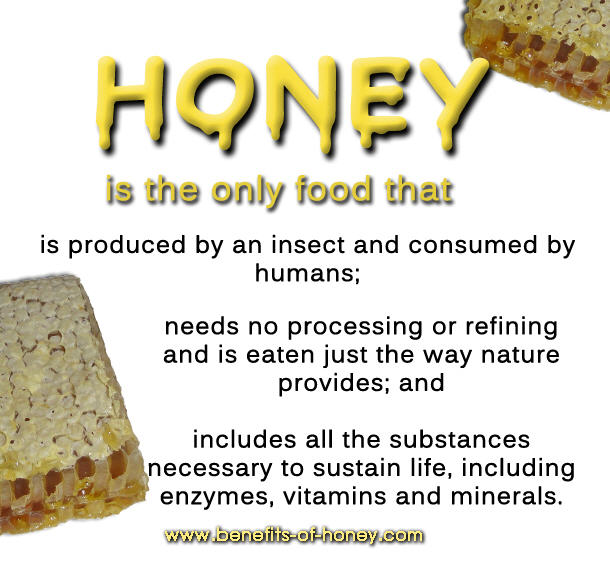

Honey had an important role in births, deaths and marriages in Ancient Egypt.
It was also used as a natural antibiotic.

.Unit 6: SAFETY.
*MODAL VERBS IN ENGLISH.
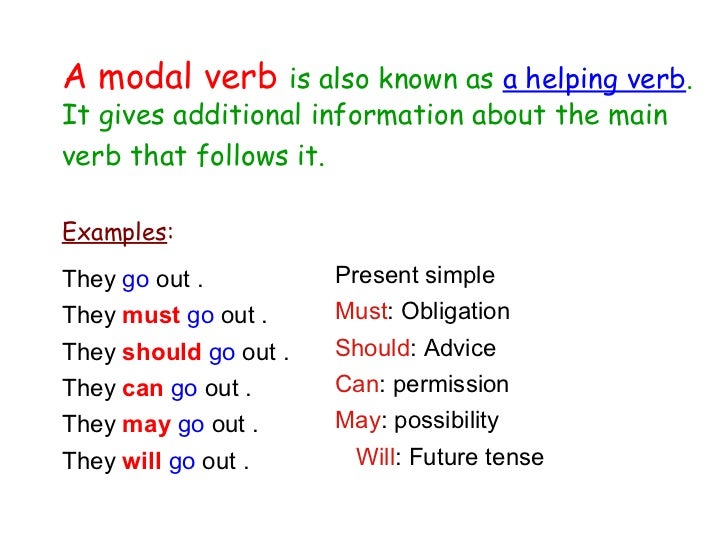
.Must as a modal verb :
Must expresses an internal
obligation that is
imposed
by the speaker. Examples would be
the following :
.
. This door
handle must be
rotated fully.
.He must take his medicine three times a week.
.I must do the washing
up.
.You really must see
a doctor about that nasty cut.
. We must try
to escape.
.Must also expresses logical deduction. Some
examples
are the following:
.He must be French.
.That must be Frank.
-Revise must and mustn´t as modal verbs.
-School rules to take into account.
Learn more English here with interactive
exercises,
useful downloads, games, and weblinks. Practise your
grammar, vocabulary, pronunciation, listening, and reading,
and have some fun too. Select your edition and level below:
useful downloads, games, and weblinks. Practise your
grammar, vocabulary, pronunciation, listening, and reading,
and have some fun too. Select your edition and level below:
-Vocabulary calendar.
Come back each month and get the Vocabulary Calendar.
It will help you to organize and learn new vocabulary.
. REVISION OF NUMBERS.
The following chart shows the cardinal numbers from one to one
million in English:

.Click on the following link to study the use of cardinal numbers
in English:
-Use of numbers in English.
.Write the following numbers in English:
-123 -5,789 - 9,253
-2,376 -4,089 -8,007
-25,167 -37,898 -67,100
-50,098 -70,009 -100,000
.Unit 7: AT SCHOOL.

Come back each month and get the Vocabulary Calendar.
It will help you to organize and learn new vocabulary.
. REVISION OF NUMBERS.
The following chart shows the cardinal numbers from one to one
million in English:

.Click on the following link to study the use of cardinal numbers
in English:
-Use of numbers in English.
.Write the following numbers in English:
-123 -5,789 - 9,253
-2,376 -4,089 -8,007
-25,167 -37,898 -67,100
-50,098 -70,009 -100,000
.Unit 7: AT SCHOOL.

-Order the words and number the pictures on school subjects.
-Type the correct word in each blank according to Peter´s timetable.
-Revise the school vocabulary.
-Pictures on classroom objects.
-Multiple choice on classroom objects.
-Matching game on school objects.
-´I´m late for school´ a poem by Gareth Lancaster.
-Revision of school supplies.
-Matching exercise on school supplies.
-Matching game on school supplies.
-Can you remember the names of these classroom supplies?
-Type the missing vowels.
.THE VERB TO BE.
.This is the present tense of the verb to be.

-Positive sentences of the verb to be.
.This is the past tense of the verb to be.
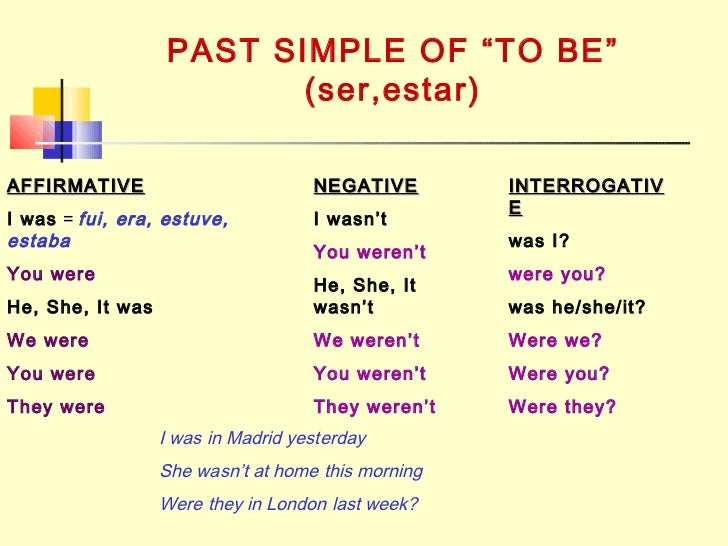
-Do this activity on the past tense of to be.
.TUTANKHAMUN.

Tutankhamun is considered to be the most famous Egyptian pharaoh
today.
His tomb was discovered in the Valley of the Kings.
His golden coffin was surrounded by 5,000 priceless treasures.
.Project on Tutankhamun.
Do a research on Tutankhamun´s life by answering the following questions:
1. When and where was Tutankhamun born?
2. At what age did Tutankhamun become a pharaoh?
3. Why is Tutankhamun so famous?
4. When was Tutankhamun´s tomb discovered?
5. Who was Howard Carter?
6. Where was Tutankhamun buried?
7. When did Tutankhamun die?
8. What did Tutankhamun die from?
9. What was Tut´s funeral like?
10. What is the mummy´s curse?
-Visit this link for further information on Tutankhamun.
.Unit 8: UNDERWATER LIFE.
.SIMPLE PAST.

It is used to express the idea that an action started and finished at a specific
time in the past.
1) Let us consider the first use of the simple past:

.Examples:
-I saw a movie yesterday.
-He didn´t see a play yesterday.
-She washed her car.
-Did you have dinner last night?
-She didn´t call Debbie.
2) We use the simple past to list a series of completed actions in the past.

.Examples:
-I finished work, walked to the beach, and found a new place to swim.
-He arrived from the airport at 8:00 o´clock, checked into the hotel at
9:00 o´clock, and met the others at 10:00.
3) The simple past tense can be used with a duration which starts and stops
in the past.

.Examples:
-I lived in Brazil for two years.
-We waited for one hour.
4)The simple past tense can be used to describe a habit which stopped
in the past.

.Examples:
-I studied French when I was a boy.
-Did you play a musical instrument when you were a kid?
.SEQUENCE OF THE SIMPLE PAST SENTENCE.
. This is the sequence of the simple past tense to follow in the positive,
negative and question:
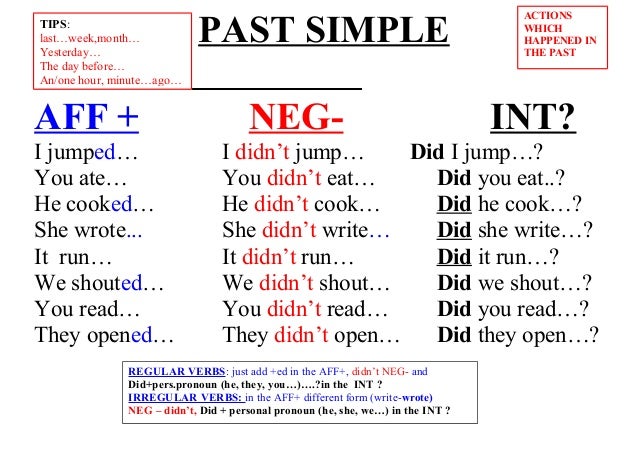
.Make the negative and question sentences of the following ones:
-We listened to the radio for two hours yesterday.
-They lived in a big house.
-The policeman stopped the car.
-We studied Spanish yesterday.
-She went to the cinema last Saturday.
-I read a book last week.
-He travelled around Europe last year.
-We had a Chinese meal two weeks ago.
-They went to Australia last year on their holiday.
.REVISION OF THE SIMPLE PAST TENSE.
-Past simple activity I
-Past simple in regular verbs.
-Past simple listening on the biography of Hernán Cortés.
-Past simple activity II.
-Choose the right tense in this text on Shakira´s life.
-Complete this text with the right tense on Cinderella.
.CINNAMON.

.Write an assignment on cinnamon. Follow the following steps and
add more interesting information on this spice.
1. What is cinnamon?
Cinnamon is a spice that is used in sweet and savoury foods. It is native to
Bangladesh, Sri Lanka, India and Burma.
2. Uses of the cinnamon in Ancient civilizations.

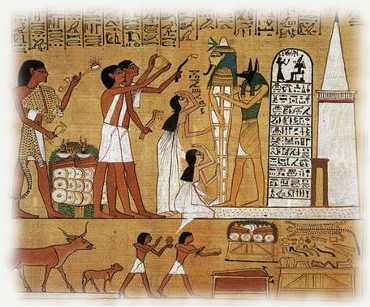
It was known in ancient civilizations such as the Greeks and the Egyptians.
It was highly prized among ancient nations as it was regarded as a prize fit for
monarchs and even for a god.
The Egiptians used cinnamon and cassia for embalming process.
The Romans used it in their funeral pyres, too.
3. A great variety of cinnamon in the market.
The two most popular way to purchase cinnamon are the stick form and the
ground variety. There are two common types of cinnamon: the Ceylon cinnamon
and the caissa. The first one is native to South Asia. The second one is native to
Indonesia. There are also Chinese cinnamon and Vietnamese cinnamon.

Istambul market is famous for its great variety of spices.
You can buy cinnamon in sticks, powder or leaves.
4. Uses in cuisine.
Cinnamon is widely used as a spice. It is employed in cookery as a condiment
and flavouring material. It is used in many dessert recipes such as doughnuts,
apple pie, hot chocolate drink…
It is also used in Turkish and Persian cuisine for both sweet and savoury dishes.
5. Health benefits of cinnamon.
It was used in traditional medicine to treat respiratory infections such as a cold
or a mild flu. It is believed to be rich in antioxidants.
It has been confirmed a maximum Tolerable Daily Intake of 0.1 mg og coumarin
per kg of body weight by the European Food Safety Authority.
Higher levels of cinnamon intake might cause liver damage.

.Describe one of your favourite places to visit such as Selwo Marina, Selwo Aventura,
Tivoli World, Plaza Mayor...
Let us consider as an example of a description that of Selwo Marina.
Follow the following steps:
.Selwo Marina.
1. Explain the type of place it is and where it is located.
Sea Life is a fantastic aquarium. It is in Benalmádena.
It has marine habitats.
2. Specify what it offers the visitors. Use the lingüistic structures
there is/there are.
There are some sharks, clownfish, sea urchins, starfish, dolphins,
seals, and many others. There is an aquarium and a dolphinarium.
3. Add some amazing facts in your visit. Give as many examples
as you can.
There are some fantastic talks and feeding demonstrations all day.
Kids can hold a crab and a starfish.
You can discover over 2,000 creatures in the aquarium.
4. Suggest an interesting piece of information that attracts visitors.
Explore the depths of the ocean in your visit to Sea Life aquarium
in Benalmádena. It will be exciting and it will be a worthy experience.
If you are a kid, you will enjoy the visit to Sea Life aquarium.
.Unit 9: TECHNOLOGY.




No comments:
Post a Comment
Note: only a member of this blog may post a comment.